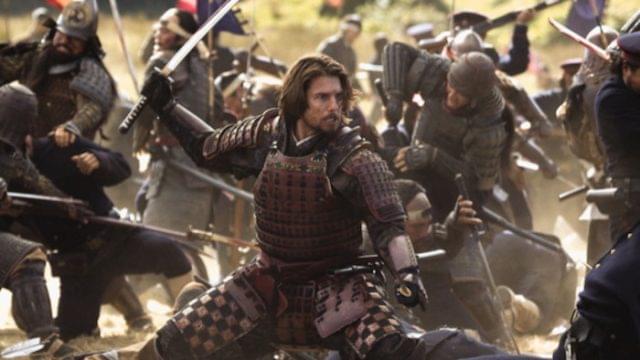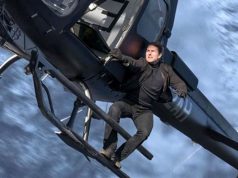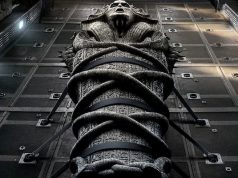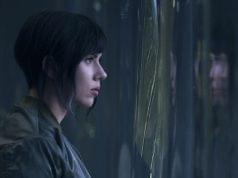
Tom Cruise barrels through “The Last Samurai” with a level of physicality he hasn’t displayed on film in some time. Even in action pictures like “Mission: Impossible” and “Minority Report,” his movements have seemed perfunctory, like he was too caught up in the machinery of the blockbuster to convince himself he was actually doing any of the stunts required of him. But now he has found a role that allows him to mix passion with kinesis, and as he fights both against and with the Japanese samurai of the 1870s, he is ferocious, unleashed and electrifyingly physical. Motion is no longer just motion; it’s an expression of emotion.
Which is why some action films are more than just action films, and why “The Last Samurai” in particular transcends the genre, and why it is being released in Oscar-hopeful December rather than popcorn-selling June. It’s an epic, to be sure, but it keeps a close eye on the humanity of its story and eschews needless spectacle.
The director, Edward Zwick, displayed a similar knack for spotlighting a film’s human elements amidst chaos in “Glory” (1989) and “Legends of the Fall” (1994). He co-wrote “Last Samurai” with Marshall Herskovitz and John Logan, the latter of whom co-wrote “Gladiator” (2000), which fit the same category. So we are in good hands.
The story begins in San Francisco in 1874 as we meet celebrated Civil War captain Nathan Algren (Cruise) now drunk, washed-up and doing the 19th-century equivalent of mall appearances, showing up in towns as a pitchman for the Winchester gun company. He rode with Custer during his infamous Last Stand and is haunted by memories of war’s brutality, made worse by his current occupation, which requires him every day to regale listeners with war stories as he demonstrates the quality of Winchester’s guns.
He’s recruited with his old associate Zebulon Gant (Billy Connolly) to go to Japan for six months to teach the imperial troops — still in the bow-and-arrow mode — to use guns. The samurai, who feel the emperor is moving too fast toward modernization (and which they fear means Westernization), are mounting a rebellion against the emperor. His men are not nearly as well-trained in the art of war as the samurai are, but with guns, they should be able to defend themselves.
In Japan, Algren is awe-struck, as are we, by the beauty of the country — credit cinematographer John Toll (“Braveheart,” 1995) — but he is more preoccupied with the task at hand, and at suppressing his demons. Then, after an ill-advised skirmish with the samurai, Algren is taken captive by them. Their leader, Katsumoto (Ken Watanabe), wants to understand his opponents by studying Algren.
From there Zwick effects a marvelous switch, turning our sympathies by moving our point of view. Spending time with the samurai, we and Algren come to understand their philosophies and their objections to the emperor’s modernization of Japan. Cruise’s soulful performance, crucial to the film, allows us to see Japan through Algren’s eyes, and to feel what he feels.
Nearly as important is Ken Watanabe’s portrayal of Katsumoto. A strong warrior with a sensitive mind, Katsumoto demonstrates how flawed Algren’s perception of the samurai was, with intelligence and humor to spare. Watanabe is completely effective in the role — though perhaps not enough to keep the final scene from ringing a little false and overly laudatory.
But a minor misstep here and there is easily overlooked in such a grand, penetrating film. The war scenes are at once thrilling and horrifying, while the major characters fighting in them — do not overlook Tony Goldwyn as Algren’s long-time foe — come passionately to life. It’s a film about honor, and it’s an honorable film.
A- (2 hrs., 29 min.; )
In 2011, I reconsidered this movie for my "Re-Views" column at Film.com.





